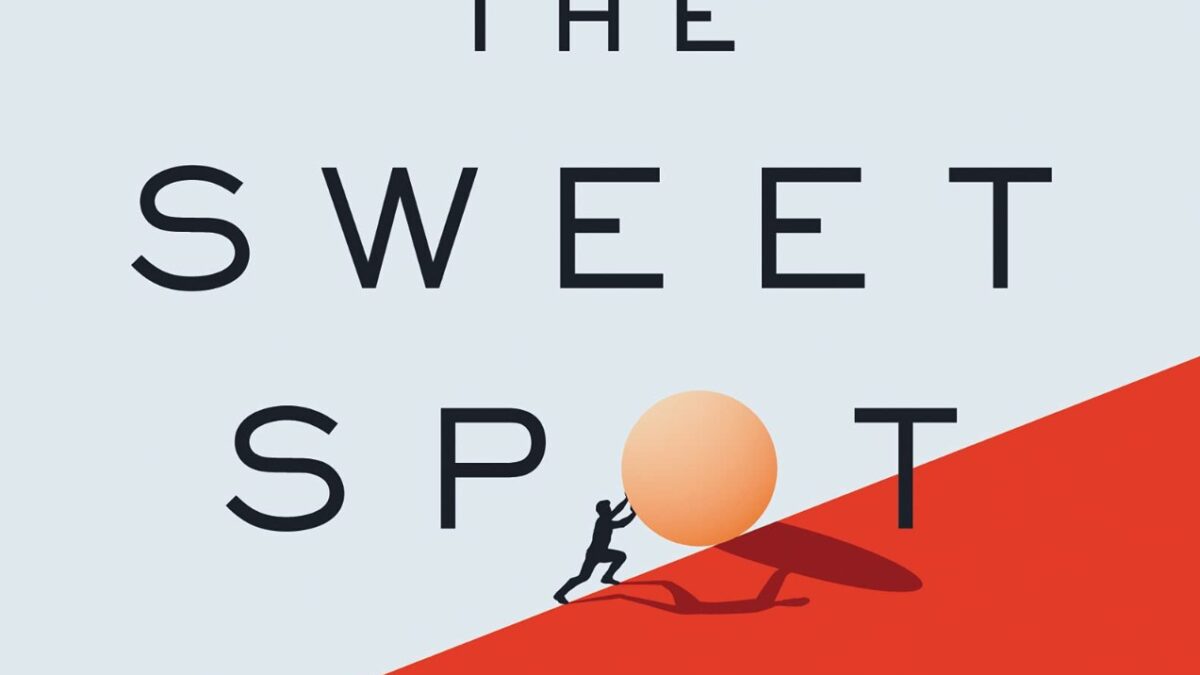Whenever I’m running, whether it’s a morning five-miler, a trail race, or a marathon, I typically encounter at least one moment of above-average physical or psychic pain: sore ankles, shortness of breath, the fear that the next step will be my last. Yet, almost every time, not only do I push on, but I welcome the suffering. Why?
This question—why do some people voluntarily invite pain into their lives?—has bedeviled philosophers, psychologists, sociologists, theologians, and physicians for millennia. Two opposing answers have generally held sway: First, we embrace suffering for instrumental reasons, such as improving our health, demonstrating toughness or dominance, or sacrificing for others.
Second, we welcome pain because it’s actually, irrationally, a source of pleasure. Apologies to John Cougar Mellencamp, but sometimes human beings just want to make it hurt so good.
These explanations, even if they seem mutually exclusive, indeed go a long way toward resolving this conundrum, and recent social-science evidence bears them out. I run to enhance my physical and mental health. Even though it hurts, I know I’m helping myself in the long run. I also enjoy—at least some of the time—the endorphins that my strenuous exertion releases. Instrumentalism and masochism account for many aspects of extreme self-sacrifice, hot-pepper-eating contests, and polar-bear plunges; humans never cease to evince their rational and irrational sides, sometimes simultaneously.
Yet these justifications for chosen pain seem to omit a key, if hard-to-define, element: purpose. For many people, myself included, it’s not simply that suffering helps us achieve a goal, or that pain provokes a temporarily pleasant chemical reaction, but that the feeling of suffering itself provides meaning that transcends its immediate effects.
When I run, for instance, the strain itself empowers me in the moment not only to improve my performance but to reflect on work and personal challenges. Conversely, when I’m compelled by circumstance to go days without running, and I’m unable to access its attendant pains, every aspect of my life loses a measure of meaning.
How Pain Helps
At the outset, it’s important to note that pain’s central biological and evolutionary purpose is to signal danger. “Pain is information about what’s wrong,” according to Paul Bloom, the Yale psychologist and popular author, “and an inducement to make things better.”
Yet at times we embrace pain in order to enhance our lived experience. “Under the right circumstances and in the right doses,” Bloom reckons in his new book The Sweet Spot: The Pleasures of Suffering and the Search for Meaning, “physical pain and emotional pain, difficulty and failure and loss, are exactly what we are looking for.”
This is true in both the micro and macro senses. “We sometimes play with pain,” Bloom reports, citing experiments performed by Daniel Kahneman and his colleagues, “in order to maximize the contrast with future experience, so as to generate future pleasure.”
The anticipation of subsequent pleasure allows us to muddle through the pain, and that pleasure, when finally experienced after the pain, is especially pleasurable. Think about the enjoyment of hot cocoa after an hour of ice-skating or the taste of a cold beer following an afternoon of assembling Ikea furniture.
In my running example, the gratification of jumping into a cold swimming pool or ocean retroactively justifies the preceding hard run on a hot summer day. We often seek out pain to intensify the pleasure that follows.
We also embrace pain because of its longer-term benefits, such as improved health from exercise or dieting. Dan Ariely’s famous Ikea Effect demonstrated how we place a higher value on items that we struggle to build or assemble ourselves than on ones we simply purchase. He and his co-authors concluded that “even constructing a standardized bureau, an arduous, solitary task, can lead people to overvalue their (often poorly constructed) creations.” We invest time and effort into challenges ranging from crossword puzzles to calculus problem sets because, difficult as they are, their completion yields satisfaction and self-betterment.
Persevering in the face of pain can also signal toughness and bravery. Consider professional athletes like Curt Schilling of the Boston Red Sox “gutting out” an ankle injury against the Yankees in the 2004 postseason despite bleeding through his socks; Bernard King of the New York Knicks hobbling out on a bum knee to win Game 7 of the 1970 NBA Finals; Kerri Strug vaulting off (and landing on) a broken ankle to win gymnastics gold for the United States in 1996; or the fictional Roy Hobbs stroking the climactic home run in “The Natural,” notwithstanding a recently reopened gunshot wound.
We valorize these heroes for withstanding and overcoming their pain, for courageously sacrificing their careers and personal well-being for the good of their team, town, or nation. I’m nobody’s hero, but I do feel especially valiant when I’m able to complete a run in inclement weather, on little sleep, or despite sore muscles.
Suffering can also promote social welfare, as we sacrifice personal comfort for the greater good. Bloom reports that, “In experimental work, people tend to contribute more to a charity when they expect to endure pain and suffering for that cause—the so-called martyrdom effect.”
I recall a charity walk in which my family and I participated many years ago early on Thanksgiving morning in downtown San Diego. A homeless man we passed on the street asked us what was going on? “We’re part of the Walk for Hunger,” I explained. Befuddled, he responded, “Well, I’m hungry. Do you have any food?”
Unfortunately, and awkwardly, we didn’t—but at least we and hundreds of other walkers felt good about ourselves and our sacrifice. “This is why savvy charities,” Bloom suggests, “sponsor walkathons and marathon, not group massages and beach parties.”
But not every instance of chosen pain yields these instrumental benefits. We must therefore examine less rational explanations for why we voluntarily embrace suffering.
Pain Feels Good (for Some)
As a self-described masochist, former ballerina, eating disorder survivor, and all-around magnet for painful experiences, Leigh Cowart unquestionably understands suffering. In Hurts So Good: The Science and Culture of Pain on Purpose, equal parts riveting travelogue and unnerving chronicle of agony, Cowart, a science journalist, argues that for many people, pain and pleasure are synonymous.
In some ways, Cowart’s argument is chemical: “endorphin is a portmanteau of ‘endogenous’ and ‘morphine.’ The drugs are coming from inside the house.” Some masochists deliberately choose pain because it triggers instant gratification.
Cowart adduces ample, if somewhat disturbing, evidence for this thesis, journeying to circuses featuring acrobats dangling from skin piercings in unimaginable places, witnessing a tongue-forking procedure, partaking in a hot-pepper-eating contest, participating in the infamous Coney Island Polar Bear Plunge on a frigid New Year’s Day, and observing an insane multi-day ultramarathon in the Tennessee backcountry.
Cowart champions the notion that “the experience of pain is always subjective, crafted by the mind itself and subject to all kinds of outside influences, including anxiety, threat level, emotional state, previous memories, degree of anticipation, and sexual arousal. Hurts So Good cites various neurological studies concluding that the somatosensory cortex in both self-identified masochists and non-masochists physically process pain in the same way but that masochists in pain displayed higher levels of activity than non-masochists in portions of the brain responsible for memory and cognition. Those who enjoy pain connect with it on a different intellectual and emotional level than those who don’t.
To be sure, aspects of masochism tend toward the instrumental. At one point, Cowart defines the term as “something universal, timeless, human: the deliberate act of choosing to feel bad to then feel better,” and further asserts that “people have long used this tactic, consenting to suffer so that they can enjoy the deliberately engineered biochemical relief that follows painful stimuli,” or what is later referred to as “nice homebrew morphine.” Indeed, in the many cases Cowart surveys, the sufferers point to the salutary aftereffects of torturous experiences.
But those same respondents also emphasize their enjoyment of the pain in the moment. One interviewee described his experience during a “chest pull,” proudly telling Cowart that “my mind started removing my spirit from my flesh. I was hovering over myself looking at myself as in the third person.”
Ed Currie, the American chili pepper “breeder” responsible for the Carolina Reaper, the fieriest species on earth, explained to Cowart that “when you eat superhot peppers, it actually makes you feel good. It gets you high.” Then, too, sexual masochism boasts millions of practitioners worldwide, people who, by definition, regard painful or humiliating sexual experiences as pleasurable.
Cowart also cites a 2012 study by the University of Pennsylvania’s Paul Rozin that found half of participants relished negative experiences. For many, suffering is an inseparable part of the fundamentally irrational human experience.
Pain Means Something
But pain is also something more than suffering. Bloom quotes a famous story about Abraham Lincoln, a consummate instrumentalist. After insisting to a passenger in his carriage that “all men were prompted by selfishness in doing good,” he ordered the coachman to halt to allow him to descend into a muddy gully to rescue a group of piglets from drowning.
When Lincoln’s companion challenged his supposedly self-centered worldview on account of this deeply altruistic act, he retorted: “Why, bless your soul, Ed, that was the very essence of selfishness. I should have had no peace of mind all day had I gone on and left that suffering old sow worrying over those pigs.”
Yet over and above simply avoiding an unsettled mind, Lincoln surely enjoyed more than the mere aftermath of having saved those helpless creatures. While there’s no way of knowing for sure, it’s easy to imagine happiness and fulfillment washing over Honest Abe as he rolled up his long pantlegs and mucked about the putrid bog. There’s deep pleasure and value in the moment of discomfort, not only in its wake.
This in-the-moment approach has an analog in traditional Judaism. From an instrumental perspective, the ancient rabbis labored to define the value of pain—quite literally. The Talmudic tractate Baba Kamma establishes a tort regime that includes reimbursement for pain and suffering as a form of damages.
But the scholars of Israel disagreed with the scholars of Babylonia over how to correctly assess the monetary amount of pain, with the former pegging the value to the amount a person would have to be paid to undergo such suffering and the latter tying it to the sum a person would pay to forego such pain. Either way, at least in the context of civil disputes, the ancient Jewish tradition regarded suffering in technical, monetary terms as something to be avoided and compensated—and certainly not as a value in and of itself.
Yet when it comes to the spiritual power of pain, things are a little different. For instance, the rabbis adjure us to subjugate our souls—literally, to torture them—on Yom Kippur, the holiest day of the year, when traditional Jews forego food and drink, the comforts of leather shoes, showering, perfume, and sexual relations.
This suffering, too, is designed to facilitate a goal — i.e., a single-minded focus on penitence and prayer — but it also yields powerful feelings of relief and communal connection that attend the traditional break-fast meal at the end of the holiday. Along similar lines, Cowart cites the recorded experiences of medieval flagellants, whipping themselves in a religious frenzy to ward off the Black Death and to enter “a state of feeling bad as a pathway to the state of feeling better, a better life or a happier ending.”
The suffering fostered by Yom Kippur’s fasting and related discomforts transcends these benefits, itself serving as a unique kind of pleasure. We sit in synagogue, hungry and smelly and tired, but relishing the meaning of suffering, viscerally sensing the pain and connecting it to our personal and spiritual shortcomings.
Yes, the ordeal is symbolic and inspirational, but it’s also expressive and intentional. We feel, deeply, how the impoverished feel, and in the moment we strive to help them. As Nachmanides, the 13th-century Spanish scholar, observed, it’s no accident that the Hebrew word for suffering—yissur—shares a common root with the term for ethical behavior—mussar. The pain (of Yom Kippur, of life in general) isn’t merely a stand-in for morality: it embodies it.
Similarly, Brock Bastian, a University of Melbourne psychologist, told Cowart that “pain is often used in rituals in general because it signifies something meaningful.” Bastian and colleagues conducted a groundbreaking 2019 controlled experiment, entitled “Emotionally extreme life experiences are more meaningful,” in which they found that “the emotional extremity of an event plays a key role in whether events are found meaningful, as the most meaningful events in our studies were those that were either extremely pleasant or extremely painful.”
While their findings relied on subjective reporting, and the authors candidly acknowledged “the possibility that reciprocal processes influence our results; emotional intensity may drive meaning in events, but meaningful events may also come to be seen as more intense over time,” their study nevertheless reinforces the intuitive notion that we welcome painful experiences because we find them meaningful.
Likewise, Dave Proctor, the third-place finisher in the 2019 running of Big Dog’s Backyard Ultra World Championship, recalled thinking, near the end of his 200-mile-plus scamper over two non-stop days, that “I’m capable of so much more.” The unimaginable agony of running for days on end on what must have been blistered, bloodied stumps embodied, for Proctor, the deepest sense of self-reflection.
For me, too, on a dramatically lesser scale, running pains themselves, in the moment, viscerally reflect my strengths and weaknesses, the potential and limits of my abilities, the resolution of which represents the profoundest reason for my striving.
Likewise, some women who refuse anesthesia during childbirth cite as justification the meaningfulness of labor pains. Bloom touches on this when he writes that “I’ve heard from some women who have had children that the torment is an important aspect of it, that the relief provided by an epidural would make the experience less meaningful, less authentic.”
One practicing obstetrician who underwent anesthesia-free childbirth tells her patients considering following suit that “pain during childbirth is normal and necessary. It signals that your body is doing what it needs to do. Every wave of pain gets you closer to the goal: your beautiful baby.” The pain is the point: in the moment, it’s a metonym for the entire, extraordinarily moving birthing experience.
The notion of “flow” echoes this sense of purposeful, in-the-moment suffering. We enter a flow state, according to Mihaly Csikszentmihalyi, the Hungarian psychologist who coined the term, when we experience focused, intense concentration, a sensation we can attain only through strenuous physical or mental effort. “The best moments usually occur,” he wrote in 1990, “if a person’s body or mind is stretched to its limits in a voluntary effort to accomplish something difficult and worthwhile.” Willingly inflicting challenges upon ourselves unlocks creative energies in the moment that we otherwise could not access.
The same can be true of unchosen pain as well, and here, Bloom cites Victor Frankl, the celebrated psychiatrist and Auschwitz survivor, for the proposition that finding meaning in life eases the burden of suffering. “Those who had the best chance of survival” in the Nazi death camps, Bloom asserts, channeling Frankl, “were those whose lives had broader purpose, who had some goal or project or relationship, some reason to live.”
Knowing there was something out there beyond the barbed wire provided incentive enough for some to survive. Elsewhere Bloom argues, similarly, that “some forms or suffering, involving struggle and difficulty, are essential parts of achieving these higher goals, and for living a complete and fulfilling life.”
All very true. Yet, in many ways, as Frankl himself recognized, the suffering itself provides that meaning and purpose. “There was no need to be ashamed of tears,” Frankl wrote in his 1946 Man’s Search for Meaning, “for tears bore witness that a man had the greatest of courage, the courage to suffer.”
At least some Auschwitz inmates wore their suffering as a badge of pride, an act of bravery almost unimaginable to contemporary free people and yet still, somehow, relatable. We want our pain to mean something, and not simply in order to overcome that suffering but also to revel in it, to elevate its effects, to experience its depths.
Why Does It Matter Why We Choose Pain?
In the end, though, what difference does it make why we choose pain, especially if the answers are so multifarious? Indeed, in his perceptive exploration of pain in The New Atlantis eight years ago, Ronald Dworkin, a practicing anesthesiologist and Hudson Institute fellow, noted that “human lives resist being studied according to abstract principles or names or categories, but rather demand and deserve to be understood one person at a time.” If everyone experiences pain differently, and welcomes it for diverse reasons, who cares why some people choose pain for its meaning?
For one thing, understanding the purposive nature of self-chosen suffering for many people can help us discover and police the fine line between masochism and self-injury. Perhaps the soundest distinction lies in the explanation of Dr. Allan House, author of a key 2015 paper, that “self-harm is more about the harm than the pain.” In other words, the purpose of the suffering makes all the difference in the world. Similarly, Cowart’s friend Darien Crossley recounts that “the only difference between my maladaptive self-injury and my sexy pain on purpose is, I feel, the intention behind it.”
More broadly, grasping how individuals embrace suffering because it furnishes meaning can help those who do not share this predilection understand, appreciate, and normalize it. Rather than mock as idiotic, condemn as superstitious, or prohibit as immoral those who engage in self-abnegating religious rituals, athletic endeavors, or bodily ordeals, we should recognize the very real physical and psychic benefits that suffering confers to the sufferers. Such interpretive generosity can foster tolerance and self-improvement.
In the end, we’re only beginning to understand the biochemical and psychological underpinnings of chosen pain. Cowart highlights the fundamental irrationality and subjectivity of pain, insisting that “I believe, through research and interviews and personal experience, that using pain for its own sake is an everyday part of being human.”
Bloom concludes by asserting that “chosen suffering can generate and enhance pleasure, and…is an essential part of meaningful activities and a meaningful life.” Both arguments are true, if incomplete. For many people, over and above furnishing direct pleasure and indirect benefits, pain itself is meaning, is purpose, is itself a reflection of humanity’s never-ending effort to understand and better itself.









